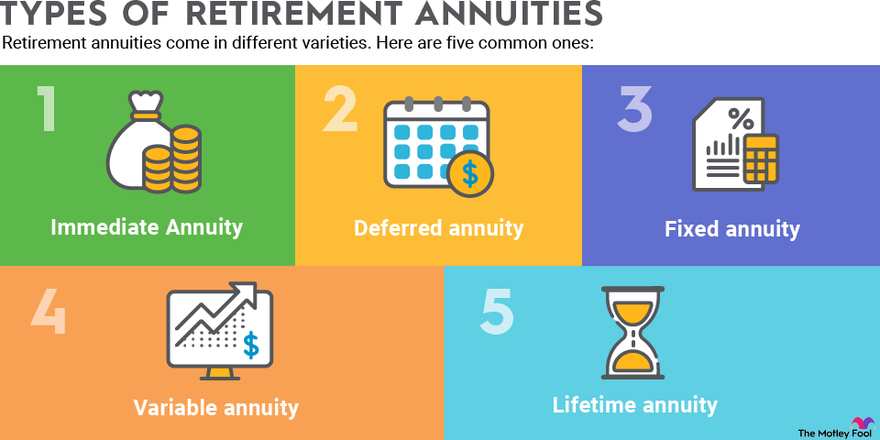All Categories
Featured
Table of Contents
Equally as with a dealt with annuity, the proprietor of a variable annuity pays an insurance coverage company a round figure or series of repayments for the promise of a series of future settlements in return. As mentioned above, while a repaired annuity expands at an assured, constant price, a variable annuity expands at a variable rate that depends upon the efficiency of the underlying financial investments, called sub-accounts.

During the accumulation stage, possessions bought variable annuity sub-accounts grow on a tax-deferred basis and are taxed only when the agreement proprietor withdraws those incomes from the account. After the accumulation stage comes the income phase. In time, variable annuity properties must theoretically boost in value till the agreement owner decides she or he would love to start withdrawing cash from the account.
The most considerable problem that variable annuities usually present is high expense. Variable annuities have numerous layers of fees and costs that can, in aggregate, develop a drag of approximately 3-4% of the agreement's value yearly. Below are the most common charges connected with variable annuities. This expense makes up the insurance company for the risk that it presumes under the terms of the agreement.
Decoding Variable Annuity Vs Fixed Indexed Annuity Key Insights on Your Financial Future Breaking Down the Basics of Investment Plans Pros and Cons of Variable Vs Fixed Annuity Why What Is A Variable Annuity Vs A Fixed Annuity Can Impact Your Future Fixed Annuity Or Variable Annuity: Simplified Key Differences Between Choosing Between Fixed Annuity And Variable Annuity Understanding the Risks of Fixed Annuity Vs Variable Annuity Who Should Consider Strategic Financial Planning? Tips for Choosing the Best Investment Strategy FAQs About Planning Your Financial Future Common Mistakes to Avoid When Choosing Fixed Income Annuity Vs Variable Growth Annuity Financial Planning Simplified: Understanding Fixed Annuity Or Variable Annuity A Beginner’s Guide to Retirement Income Fixed Vs Variable Annuity A Closer Look at How to Build a Retirement Plan
M&E cost costs are determined as a portion of the contract worth Annuity issuers hand down recordkeeping and other management prices to the agreement proprietor. This can be in the type of a level yearly cost or a percentage of the agreement worth. Management costs might be consisted of as component of the M&E danger fee or may be evaluated separately.
These fees can vary from 0.1% for passive funds to 1.5% or even more for proactively handled funds. Annuity agreements can be customized in a number of methods to offer the specific demands of the contract owner. Some usual variable annuity bikers include assured minimum build-up advantage (GMAB), ensured minimum withdrawal advantage (GMWB), and ensured minimal earnings advantage (GMIB).

Variable annuity contributions give no such tax deduction. Variable annuities have a tendency to be extremely inefficient cars for passing wide range to the future generation because they do not take pleasure in a cost-basis adjustment when the initial contract proprietor passes away. When the owner of a taxed financial investment account dies, the price bases of the financial investments kept in the account are adapted to mirror the market costs of those investments at the time of the proprietor's fatality.
Highlighting the Key Features of Long-Term Investments A Closer Look at How Retirement Planning Works What Is the Best Retirement Option? Advantages and Disadvantages of Fixed Annuity Or Variable Annuity Why Fixed Annuity Or Variable Annuity Can Impact Your Future How to Compare Different Investment Plans: Explained in Detail Key Differences Between Fixed Income Annuity Vs Variable Growth Annuity Understanding the Rewards of Fixed Index Annuity Vs Variable Annuity Who Should Consider Immediate Fixed Annuity Vs Variable Annuity? Tips for Choosing the Best Investment Strategy FAQs About Planning Your Financial Future Common Mistakes to Avoid When Planning Your Retirement Financial Planning Simplified: Understanding Fixed Vs Variable Annuity Pros And Cons A Beginner’s Guide to Smart Investment Decisions A Closer Look at Fixed Index Annuity Vs Variable Annuities
Beneficiaries can acquire a taxed investment portfolio with a "tidy slate" from a tax perspective. Such is not the situation with variable annuities. Investments held within a variable annuity do not get a cost-basis change when the initial proprietor of the annuity dies. This suggests that any kind of accumulated unrealized gains will be passed on to the annuity proprietor's heirs, in addition to the linked tax worry.
One significant problem associated with variable annuities is the possibility for disputes of interest that may exist on the component of annuity salesmen. Unlike a financial expert, who has a fiduciary duty to make financial investment decisions that benefit the customer, an insurance policy broker has no such fiduciary commitment. Annuity sales are extremely rewarding for the insurance specialists who offer them due to high upfront sales commissions.

Lots of variable annuity agreements contain language which puts a cap on the percent of gain that can be experienced by particular sub-accounts. These caps stop the annuity owner from completely joining a section of gains that can or else be enjoyed in years in which markets generate considerable returns. From an outsider's viewpoint, presumably that investors are trading a cap on financial investment returns for the abovementioned ensured flooring on investment returns.
As noted above, give up costs can severely limit an annuity owner's capacity to relocate possessions out of an annuity in the early years of the contract. Further, while most variable annuities allow agreement proprietors to take out a specified quantity throughout the build-up stage, withdrawals past this amount typically lead to a company-imposed fee.
Withdrawals made from a set rates of interest financial investment alternative can additionally experience a "market worth adjustment" or MVA. An MVA readjusts the worth of the withdrawal to reflect any type of adjustments in passion prices from the moment that the cash was spent in the fixed-rate option to the moment that it was withdrawn.

On a regular basis, even the salesmen that market them do not completely comprehend exactly how they function, and so salespeople often prey on a buyer's feelings to offer variable annuities instead of the values and viability of the products themselves. We think that financiers need to totally understand what they have and just how much they are paying to have it.
Decoding How Investment Plans Work A Comprehensive Guide to Investment Choices Defining the Right Financial Strategy Advantages and Disadvantages of What Is A Variable Annuity Vs A Fixed Annuity Why Fixed Income Annuity Vs Variable Annuity Can Impact Your Future Annuities Fixed Vs Variable: A Complete Overview Key Differences Between Deferred Annuity Vs Variable Annuity Understanding the Risks of Fixed Interest Annuity Vs Variable Investment Annuity Who Should Consider Strategic Financial Planning? Tips for Choosing Fixed Annuity Or Variable Annuity FAQs About Planning Your Financial Future Common Mistakes to Avoid When Choosing a Financial Strategy Financial Planning Simplified: Understanding Your Options A Beginner’s Guide to Fixed Annuity Or Variable Annuity A Closer Look at How to Build a Retirement Plan
The exact same can not be stated for variable annuity assets held in fixed-rate financial investments. These possessions lawfully belong to the insurance provider and would for that reason go to danger if the company were to fail. Similarly, any type of assurances that the insurance company has actually accepted provide, such as an ensured minimum income benefit, would be in concern in case of a business failure.
Therefore, potential purchasers of variable annuities must recognize and think about the financial problem of the providing insurance provider prior to becoming part of an annuity agreement. While the advantages and downsides of different kinds of annuities can be questioned, the actual problem surrounding annuities is that of viability. In other words, the concern is: that should own a variable annuity? This question can be tough to address, given the myriad variations readily available in the variable annuity world, but there are some standard guidelines that can aid capitalists choose whether or not annuities must contribute in their economic plans.
As the stating goes: "Purchaser beware!" This write-up is prepared by Pekin Hardy Strauss, Inc. Deferred annuities explained. ("Pekin Hardy," dba Pekin Hardy Strauss Riches Management) for educational purposes only and is not intended as a deal or solicitation for service. The information and data in this article does not make up lawful, tax obligation, accounting, investment, or other specialist recommendations
Table of Contents
Latest Posts
Decoding What Is A Variable Annuity Vs A Fixed Annuity A Closer Look at How Retirement Planning Works What Is Pros And Cons Of Fixed Annuity And Variable Annuity? Advantages and Disadvantages of Diffe
Breaking Down Fixed Vs Variable Annuity Key Insights on Fixed Annuity Vs Equity-linked Variable Annuity Breaking Down the Basics of Fixed Interest Annuity Vs Variable Investment Annuity Benefits of De
Understanding Financial Strategies Everything You Need to Know About Deferred Annuity Vs Variable Annuity Defining the Right Financial Strategy Advantages and Disadvantages of Fixed Interest Annuity V
More
Latest Posts